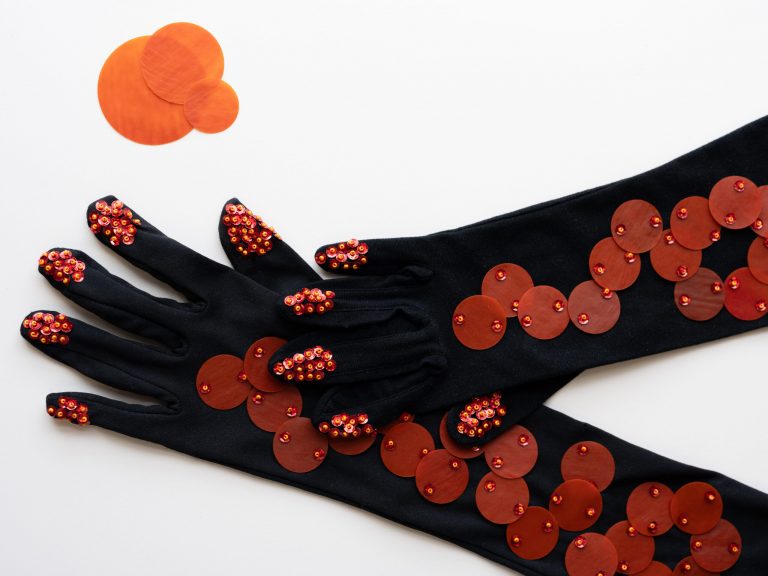AUSTIN, Texas — Many visitors to the Texas Science Museum of Natural History are familiar with its displays of giant dinosaur fossils from millions of years ago, but the museum’s newest exhibit has a focus on the future of sustainability.
Each year, the fashion industry produces plastic to make synthetic materials, using the equivalent of 300 million bathtubs of oil in the process. Promoting a vision of a cleaner, brighter future for the fashion industry, the multi-hued new collection “Particles of Color: Where Science Meets Fashion” explores the use of compostable, plant-based and biodegradable materials in clothing, accessories, jewelry and art.
Faculty, students, researchers and alumni from The University of Texas at Austin’s School of Textiles and Apparel combined their fashion design know-how with the expertise of materials researchers to demonstrate how newly developed sustainable sequins can be used in a wide range of artistic creations.
“The fashion industry is a big contributor to plastic pollution,” said Jessica Sciarra, faculty member in the School of Textiles and Apparel, who organized the exhibit. “We wanted to show that there are ways to make better things with the materials we have today.”
The exhibition features more than 50 glittering pieces made from a compostable material called polylactic acid, which is combined with natural, non-toxic dyes to create vibrant high-fashion clothing, jewelry, and artwork. According to Sciara, polylactic acid is made from agricultural waste and is easy to work with. It is practical for use in fashion because it is insoluble in water, but it breaks down when composted.
The University of Texas research into sustainable sequins began five years ago when the University awarded the President’s Award for Global Learning to Sciarra, Nathaniel Lind, an associate professor in the McKetta College Department of Chemical Engineering, and Luisa Gil-Fandino, an associate professor in the Department of Textiles and Apparel.
Now, visitors to the exhibition can enjoy the opportunity to learn how UT researchers have applied the material to fashion and see the work of designers from Austin to New York who have been recruited to create pieces incorporating this innovative material.
The exhibit will be the museum’s first new exhibit since the Texas Science and Natural History Museum reopens in September 2023 after an 18-month closure and extensive renovation. The museum’s fourth floor has been designated the Science Frontiers Gallery, which will house exhibits on advanced scientific research and is designed to show how scientific discoveries help solve contemporary problems and concerns.
“Visitors of all ages can see how research happening right here on the University of Texas at Austin campus can impact the natural world by creating compostable materials used in clothing we can all wear,” said museum director Carolyn Connerat.


